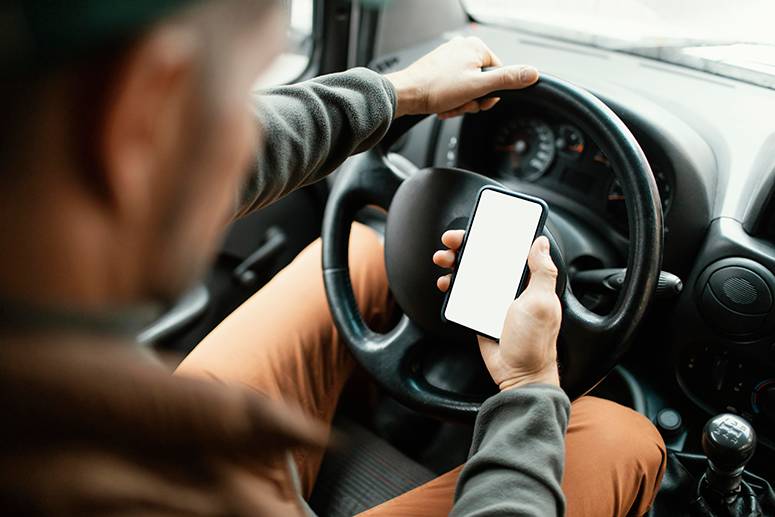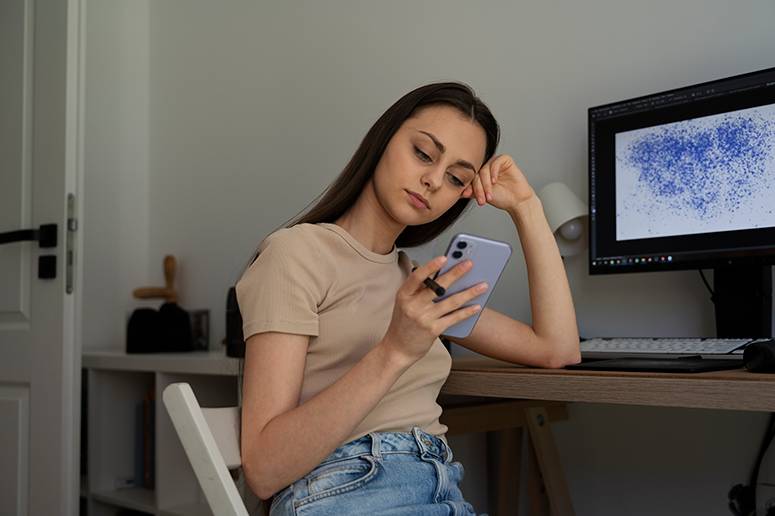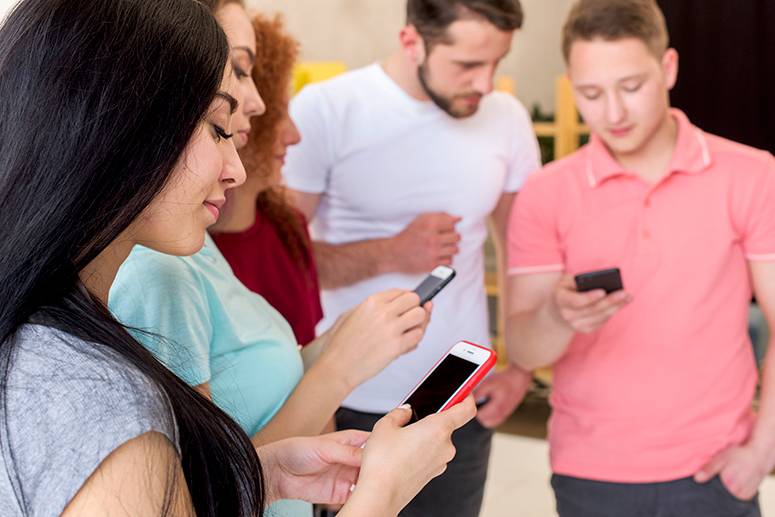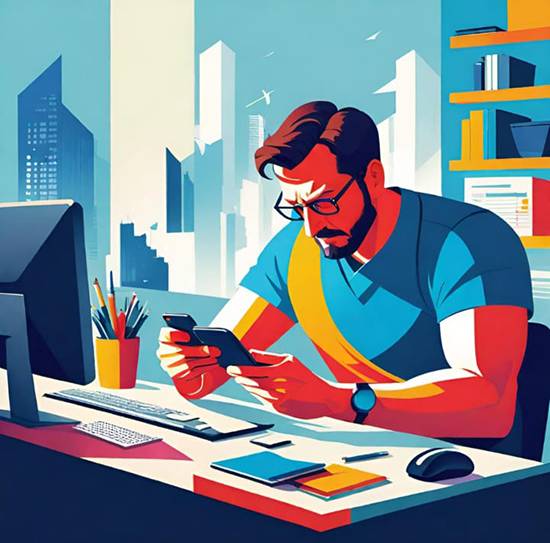Surviving the age of distraction
Once upon a time, mobile phones were a novelty, and by this, I mean they were new, innovative, convenient, practical, and revolutionary. I’m referring to relics like the Nokia 1011, which required two hands just to comfortably hold that 495-gram beast. It played its role in history, but not even Neo’s 8110 “banana phone,” made ubercool by The Matrix, could make me pine for this Jurassic tech era.
Fast-forward to now, and we’re surrounded by sleek, feather-light devices that do everything except cook dinner (although they’re probably working on that, too).
As our gadgets got smarter and smaller, we, too, evolved, or maybe devolved, depending on how you look at it. We’ve become a generation of phone zombies, stumbling down streets and sidewalks with heads perpetually bowed to the Almighty Screen.

We’ve turned into extras in a low-budget apocalypse movie: scrolling, swiping, dodging obstacles, and sometimes almost getting run over (or hitting someone). In acknowledging that there is a gadget-use problem in the country, the government enacted R.A. No. 10913, the Anti-Distracted Driving Act, in 2016. It was a critical reminder for us to keep our eyes on the road instead of on the latest funny videos that somehow miraculously appear on our social media feeds. Sadly, yet expectedly, it hasn’t proven much of a deterrent.
What started as casual screen time has escalated to a near-constant state of distraction. Today, people juggle their screens (with earphones on) while doing something else that should be prioritized, like driving, crossing the street, cooking, actually working, and, bafflingly, riding a bicycle or motorcycle (hello, delivery and share-riding kuyas!).
And it’s not just the young ‘uns; even some of us “tech dinosaurs” have been pulled into the glow, like the light at the tunnel’s end, abandoning any lingering resistance.

Anyone who watches Blue Bloods may be familiar with the Sunday family dinners of Police Commissioner Reagan (played convincingly by Tom Selleck). I imagine the show would be much less successful if instead of their witty, heartwarming conversations and friendly debate, everyone’s hunched over their phones, DMing each other across the table, sharing viral videos and the latest memes, without a single word spoken.
Of course, the dangers are obvious, though we pretend they don’t apply to us. We’re so convinced of our multitasking superpowers that we think we can check out our messages (and even key in replies) while cruising at 90 kph along the highway or navigating through the maze of city traffic without missing a beat. But the stats tell another story: mobile phone-related accidents have risen alarmingly.
Our phones may be smart, but it’s up to us to prove we’re smarter. The digital abyss will always be there, waiting.
It’s not just safety at risk—our beloved devices are also turning us into modern-day hunchbacks. The “text neck” phenomenon is no joke. Spending hours hunched over a phone adds extra weight to our necks, leading to a posture that would make Quasimodo proud. Research shows that looking down at a phone can put as much as 60 pounds of force on the neck. It’s as if we’re carrying the weight of all our notifications and memes.

Why the endless stoop? It’s the age-old allure of entertainment, multiplied a thousandfold. There’s always a new reel, viral photo, or fake news screaming for attention, a veritable Pied Piper of Distraction. With every “ping,” we surrender another piece of ourselves to the screen, trading natural upright posture for the cheap-deck-chair slouch.
And then there’s “tech-claw,” a delightful condition that comes from hours of clutching our phones like lifelines. Ever noticed that moment of panic when you think your phone is missing, followed by relief once you realized it’s not? It’s like Linus’ security blanket, only less secure.
This dependency might bring on carpal tunnel syndrome, that ache in your wrist, not to mention tiny finger cramps that hit just as you’re trying to send that crucial last emoji. Let’s not even get started on the eye strain, which leaves us blinking into the distance like newborn moles after a marathon session of watching cat videos or binging on the latest K-drama.

Understandably, this tech obsession has created some amusing social norms. When was the last time you looked someone in the eye while talking? Eye contact is starting to feel almost intimate, if not downright invasive. A true get-together today seems less like a social event and more a quiet display of texting aptitude. No wonder fewer and fewer people are entering relationships.
Millennials may still remember face-to-face chats, but they, too, have succumbed to the convenience of digital conversations, trading real laughter for “LOL” and thumbs-ups. It’s a paradox—never have we been so connected, and yet so distant.
As a sidebar, I’ve heard that the Alphas are slowly veering away from emojis, as if they’re as ancient as Egyptian hieroglyphs or Germanic runes. Far from heralding the return of actual dialog, it could be the beginning something good.
If there’s a silver lining, it’s that we’ve developed a set of “solutions” to help manage the very addiction we insist we don’t have. Ever in self-denial, we can turn to those spine-stretching apps or posture-check reminders, relying on technology to help us overcome the problems technology also created. There’s irony for you.
But for those of us who’d rather avoid an early Quasimodo impression, there are some ways to fight back.
Take a break—seriously. Step away from the screen, lift your chin, and quietly observe the real world. If your fingers start twitching, remind yourself you’re only temporarily offline; it’s not like a phantom limb and the memes will still be there anyway, long after you’ve rested.
Try screen-free meals or walks. You’d be amazed how much better food tastes or how interesting your neighborhood is when you’re not scrolling. That 20-20-20 rule? It might not work for everyone, but it certainly works for me. To prevent (further) eye strain, every 20 minutes, look at something 20 feet away for at least 20 seconds. You’ll be surprised at how simple and effective it is.
So, let’s just do it like the Greek goddess of victory. Let’s reclaim our time, our posture, our social life, and our sanity. Our phones may be smart, but it’s up to us to prove we’re smarter. The digital abyss will always be there, waiting. But every once in a while, we can stand up straight, look it in the eye, and—like
Arya before slaying the Night King—say, “Not today.”



